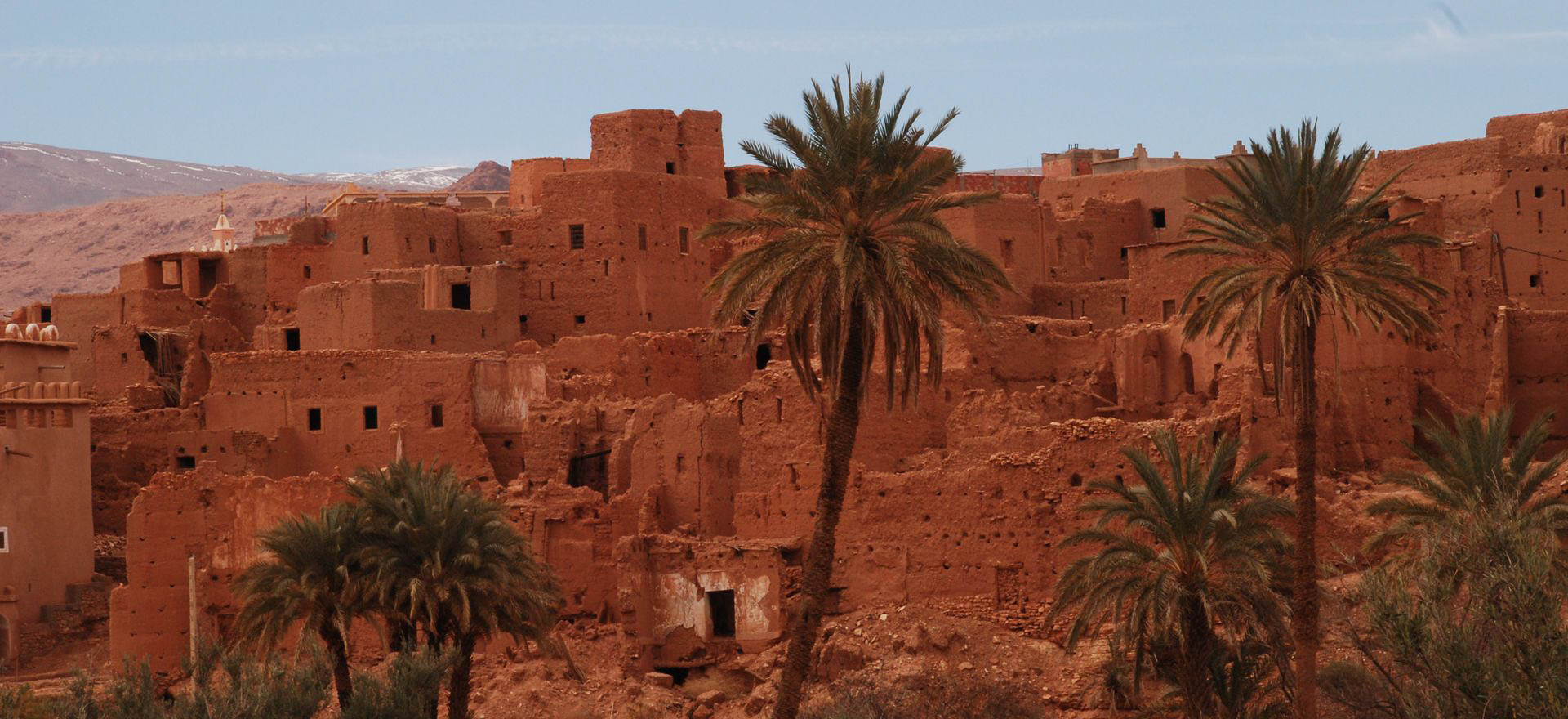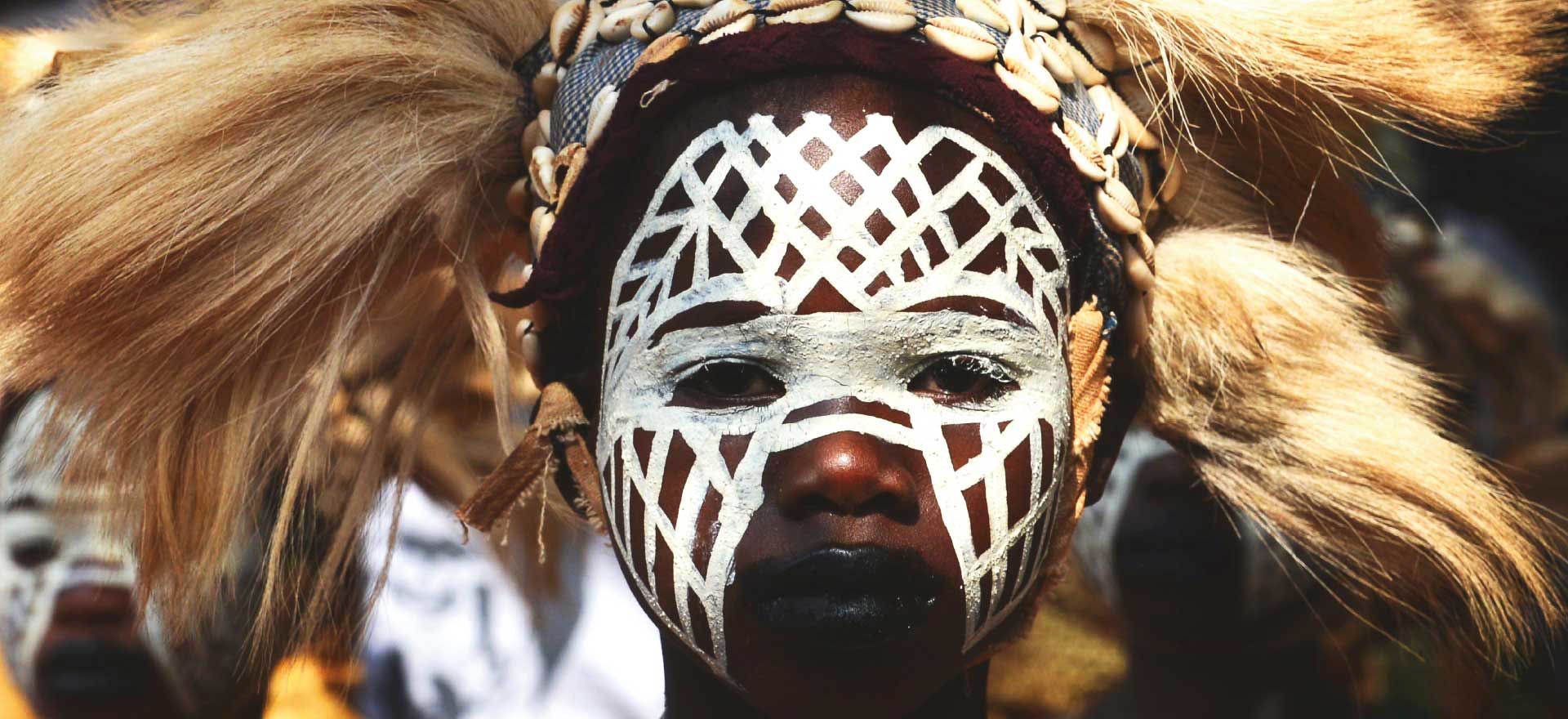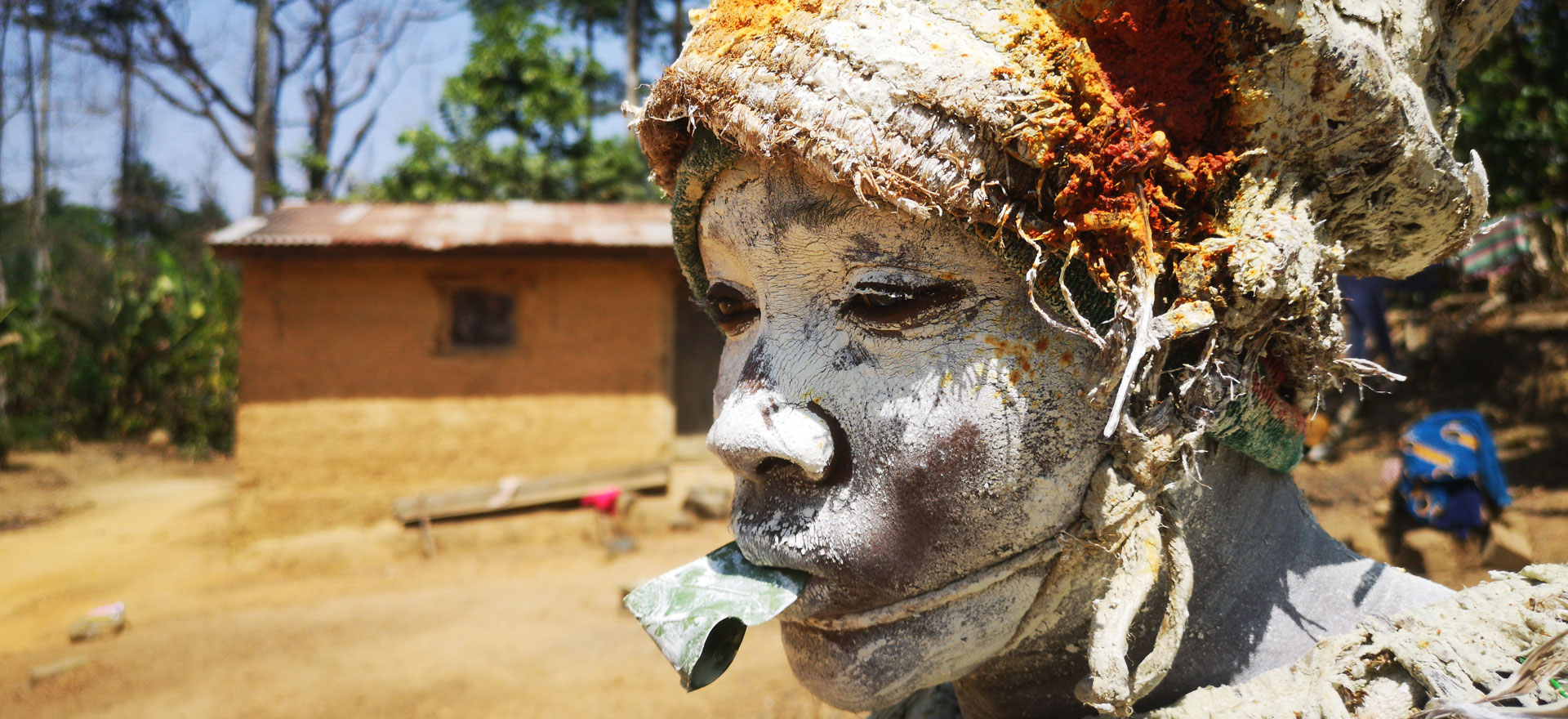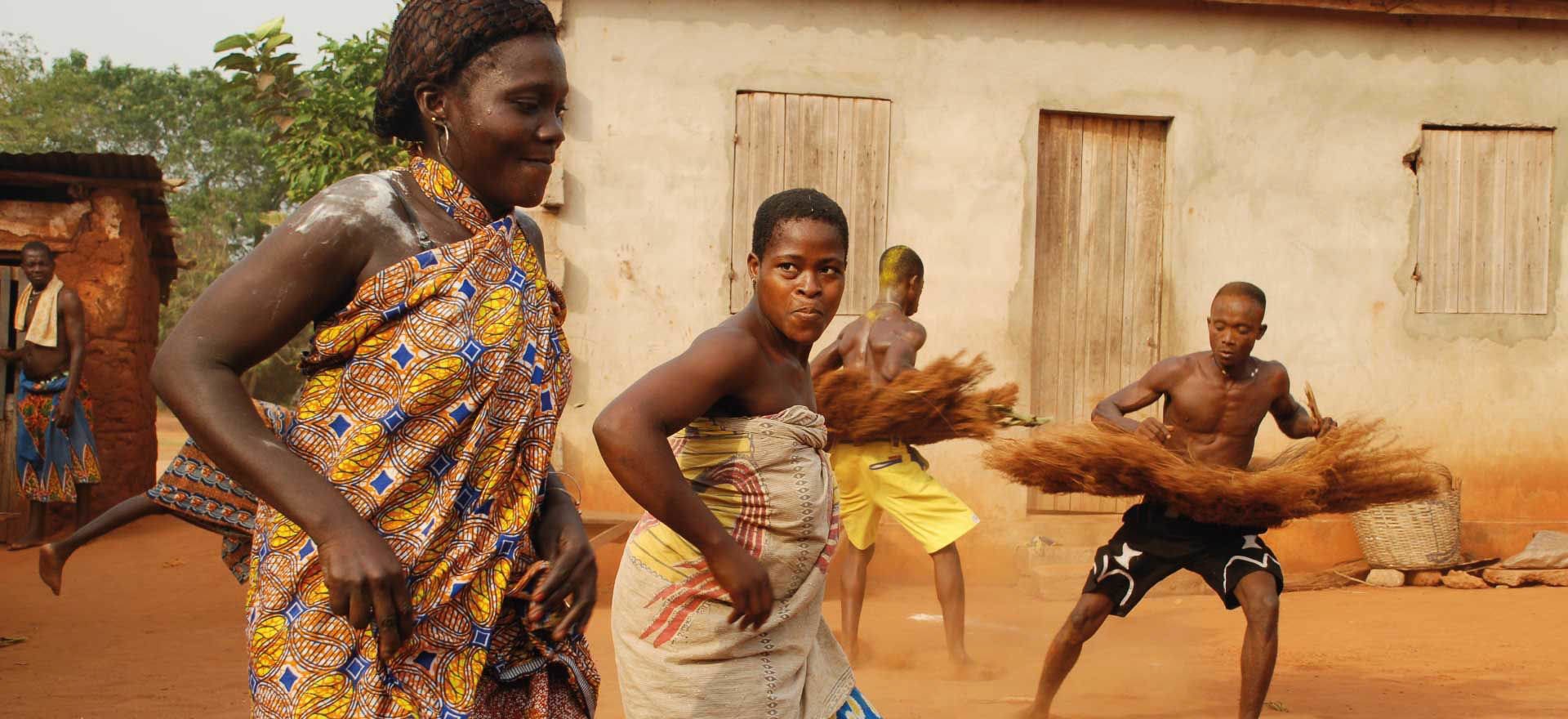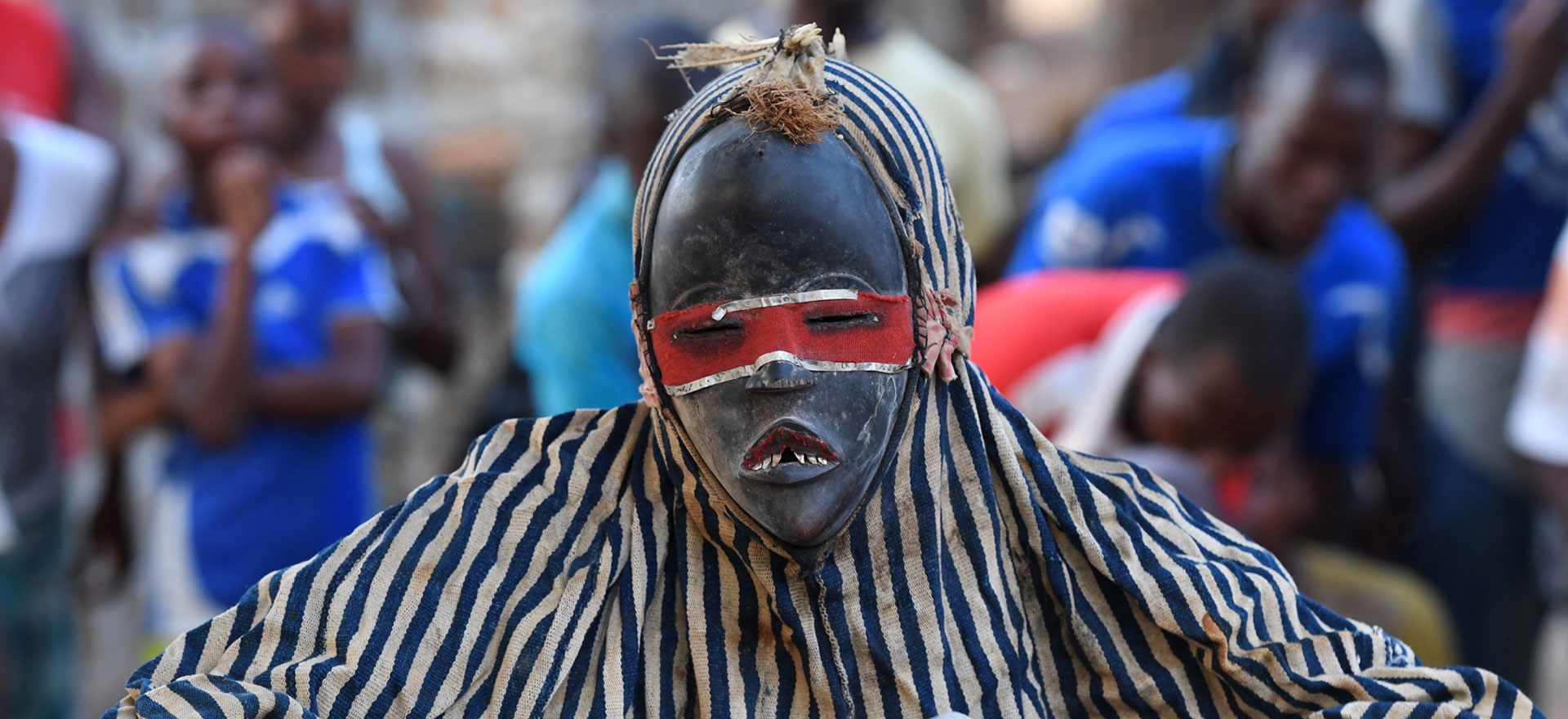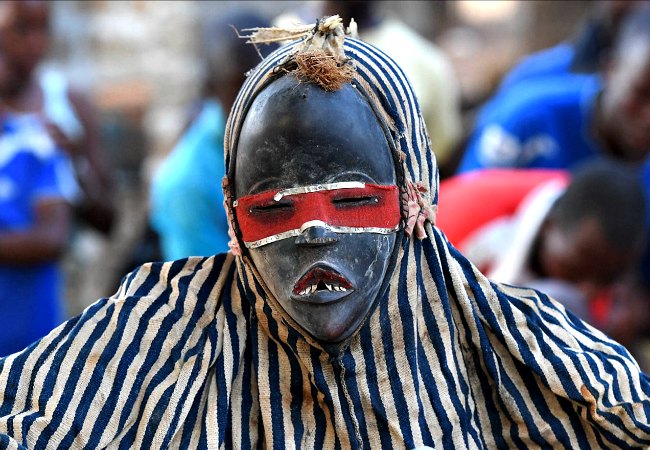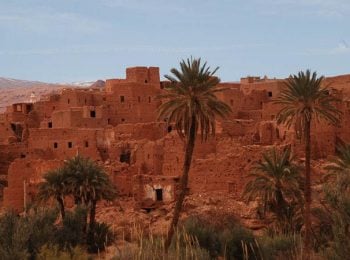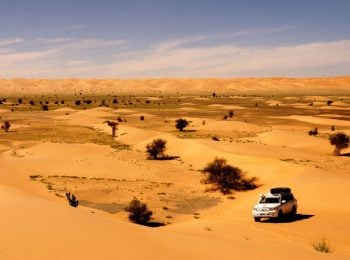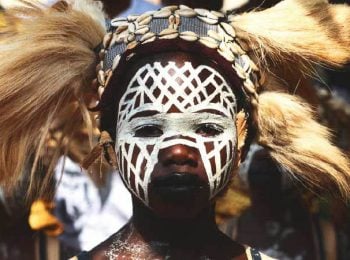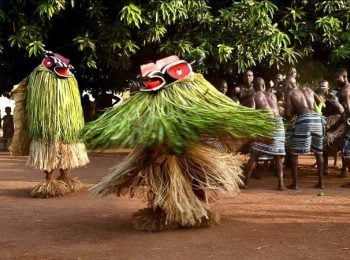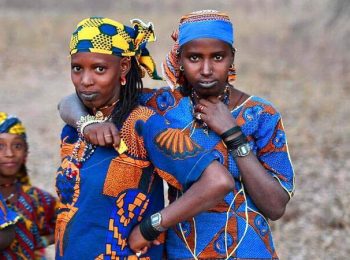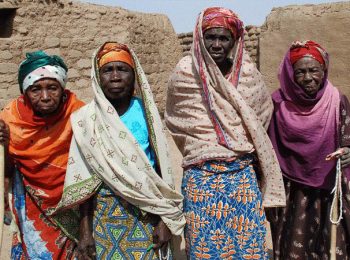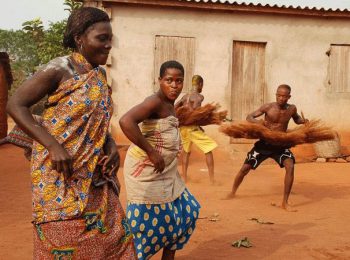Day 2 - Ait Ben Haddou
Cross the High Atlas via the stunning Tizi n Tichka pass, with superb views of the mountains along the way. Driving through the Berber heartlands we continue to the stunning collection of kasbahs at Ait Ben Haddou, then drive to nearby Ouarzazate for the night. Overnight tourist class hotel. (BLD)
Day 3 - Draa Valley
Exploring this landscape of arid mountains, we meet isolated communities and some of the most traditional people in Morocco. Make our way towards the lush Draa Valley where we spend the night. Overnight tourist class hotel. (BLD)
Days 4-5 - Erg Chegaga - Iriqui - Icht
Enter the Sahara and drive to the dunes of Erg Chegaga, much less known than the famous Erg Chebbi but equally impressive, then continue to the dry salt lake of Iriqui. On Day 5 we explore the oasis before heading to Icht for the night. Overnight Bab Rimal or similar (Day 4) and Borji Biramane or similar (Day 5). (BLD)
Days 6-7 - Guelmime – Ksar Tafnidilt
Continue to Guelmime, the last major town of Morocco proper and a former trading centre for the Saharan camel caravans. From here we head off on rough tracks along the beach, sandwiched between the dunes. Explore the remote region surrounding the Draa estuary, with tiny settlements and abandoned military posts. Overnights at Tsar Tifnidilt, a traditional style kasbah close to Tan Tan. (BLD)
Day 8 - Tarfaya
Travel south, our route taking us between the desert and the Atlantic Ocean, passing small caves inhabited by fishermen as well as the impressive Naila lagoon, an inland sea separated from the ocean by rows of dunes. In the afternoon we arrive at the small town of Tarfaya. Overnight Hotel Casamar or similar. (BLD)
Days 9-11 - Laayoune - Western Sahara
Drive to Laayoune, the main town of Western Sahara. From here we meet our local Saharawi guide and embark on an expedition into this largely unknown area. We venture into an untamed landscape of dunes and desert, stopping at wells to meet the Reguibat nomads and their herds of camels that eke a living from this unforgiving habitat. We camp for two nights, then on Day 11 reach Dakhla and stay overnight in a tourist class hotel. (BLD)
Day 12 - Dakhla
Spend the day exploring Dakhla and surrounds, with its superb beaches and opportunities to fish in the Atlantic. Overnight in Buena Vista Hotel or similar. (BLD)
Day 13 - Nouadhibou
We head south to the border with Mauritania, following a remote road between the desert and the ocean. After completing border formalities, continue to Nouadhibou, Mauritania’s second city. Overnight Hotel Medina or similar. (BLD)
Days 14-15 - Desert crossing - Chinguetti
Head to Chinguetti, one of Islam’s holiest cities and a real gem of Mauritania. With its collection of historic buildings this is one of the Sahara’s most interesting towns, with a sense of history that is almost tangible. We travel south first to the small town of Chami, then accompanied by an expert guide we drive through a remote part of the desert, where we hope to encounter local nomads and see the traces of prehistoric man such as ancient pottery. We arrive in Chinguetti on Day 15. One night simple hotel, one night local guesthouse. (BLD)
Day 16 - Chinguetti
Spend today exploring Chinguetti, visiting its historic quarter and seeing one of the collections of ancient manuscripts for which it is famous. Overnight local guesthouse. (BLD)
Day 17 - Ouadane
Drive to Ouadane. Founded in the 12th century Ouadane is a fascinating collection of old houses and mosques and has been listed as a UNESCO World Heritage Site. We have plenty of time to explore the historic quarter. Return to Chinguetti in the evening. Overnight La Gueila guesthouse or similar. (BLD)
Day 18 - Amogjar Pass – Terjit
Day 20 - Djoudj National Park – Saint Louis
We head south to Senegal, and then travel to Djoudj National Park with its incredible bird life. We take boats on the lagoon to discover vast flocks of pelicans, flamingos and more, then continue to the atmospheric town of St Louis, once the capital of French West Africa. Overnight Hotel de la Poste or similar. (BLD)
Day 21 - Saint Louis
Spend the morning visiting Saint Louis, exploring its streets by traditional caleche (horse and carriage). Overnight Hotel de la Poste or similar. (BLD)
Day 22 - Lac Rose – Dakar – Goree Island
Drive to Lac Rose. A shallow salt lake surrounded by dunes, the high concentration of minerals sometimes gives it a pink hue. Explore the surrounding area and visit a nearby fishing village, the largest in Senegal. Overnight Hotel Trarza or similar. (BLD)
Days 24-25 - Kaolack - Sine Ngayene - Banjul
Drive to Kaolack and then to Sine Ngayene, an astonishing megalithic site of over a thousand carved stones arranged into fifty two circles, recognised as a UNESCO World Heritage Site. From here we cross the border into the Gambia and take a ferry across the river, and transfer to Banjul. We then visit the National Museum with its exhibits on local archaeology and history, as well as the city centre, before arriving at our hotel. Overnight Hotel Kabacoto Safari or similar (Day 24) and Atlantic Hotel or similar (Day 25). (BLD)
Days 26-27 - Banjul – Casamance
Spend the morning in the company of an ornithological guide, looking for birds in the large park by the hotel – this is home to over 70% of the species that live in the country. We then cross into Casamance, the southern region of Senegal, head out into the surrounding villages to learn about the animistic customs that hold sway here, seeing a striking mask dance. Overnight tourist class hotel. (BLD)
Day 28 - Bissau
Drive to the border with Guinea-Bissau and continue to the capital Bissau for the night, travelling through a unique ecosystem where sea channels penetrate far inland. Overnight Hotel Azalai or similar. (BLD)
Days 29-30 - Bijagos Islands
Sail to the Bijagos Islands, a magical and unique world of authentic tribal traditions and unusual wildlife. First visit the island of Bolama, once a colonial capital but now largely abandoned, its Portuguese buildings slowly being taken over by vegetation and goats. We then spend two days exploring the archipelago and learning about the customs of the local people. Two nights tourist class hotels. (BLD)
Day 31 - Bissau
Leaving the islands behind we return to the mainland. In Bissau we have time for a quick look around the city with its colonial Portuguese architecture. Overnight Hotel Azalai or similar. (BLD)
Day 32 - Malinke region
Morning drive to a small village in the Malinke region. The Malinke are descendants of the ancient empire of Mali and we visit a community of ‘griots’ – traditional musicians and story tellers who play an important part in conserving the traditions of West Africa. We learn about their history and customs, and witness a traditional griot performance. Overnight simple hotel. (BLD)
Days 33-34 - Fouta Djalon
A long day’s drive on Day 33 where a small track takes us to the border of Guinea, through an area inhabited by Malinke and Fulani tribes, and we stop in villages where the arrival of western visitors is a rare event. On Day 34 we drive into the Fouta Djalon, a stunning area of mountains, waterfalls, plateau and savannah, where we explore the charming Fulani villages with their typical architecture. We then continue to the small town of Dalaba, with its interesting ‘casa a palabra’, a finely decorated building used for local chiefs. We also visit the villa of Guinea’s first president, Sekou Toure. Overnight simple hotel (Day 33) and Hotel Safitel or similar (Day 34). (BLD)
Day 35 - Dalaba - Kindia - Forecariah
Leave Dalaba behind and drive to the market town of Kindia. Depending on arrival time, we may visit the Voile de la Mariee waterfall. Continue to Forecariah for the night. Overnight tourist class hotel. (BLD)
Days 36-38 - Freetown – Banana Islands
Drive to the border with Sierra Leone, then continue to Freetown, Sierra Leone’s capital. Explore Freetown visiting its lively markets and seeing examples of old colonial architecture, and heading out to its beaches. From here travel to the archipelago of the Banana Islands, with its stunning beaches and fishing villages. Overnight Swiss Hotel (Day 36) and Bafa Lodge (tented camp) (Days 37-38) or similar. (BLD)
Day 39 - Bo
Head back to the mainland and drive to Bo. We spend the afternoon learning about the process of diamond mining, as we join some villagers who show us their craft. Overnight Hotel Dohas or similar. (BLD)
Day 41 - Monrovia - Gbarnga
Spend the morning exploring Monrovia. We visit the National Museum and the impressive Masonic Temple of Liberia, that has played an important part in Liberian history over the years. From here drive to Gbarnga for the night. Overnight Passion Hotel or similar. (BLD)
Day 42 - Man
Cross the border and drive into Ivory Coast. On our way we stop in a remote village to see one of the region’s ‘living bridges’ – impressive structures built from lianas, which are believed to be built by spirits. Overnight Hotel Amoitrin or similar. (BLD)
Day 43 - Man
Today we visit a village belonging to the Dan people, known for their amazing mask dancers. Explore the area to learn more about their local customs, before returning to Man for the night. Overnight Hotel Amoitrin or similar. (BLD)
Day 44 - Daloa
Venture into the forest to reach some of the more isolated settlements of the Guere people. Here we will see their mask dances and if lucky, a dance of the ‘jongleurs’, a rare performance involving initiated women with white painted faces, and considerable acrobatic prowess! Continue to Daloa for the night. Overnight Hotel La Grace or similar. (BLD)
Day 45 - Yamoussoukro
This morning we see a ceremony of the Zaouli dancing masks, a tradition of the Guro people. From here drive to Yamoussoukro, once just a village but now Cote d’Ivoire’s bizarre administrative capital. Yamoussoukro is dominated by the gigantic Basilica of Our Lady of Peace, reputedly the largest Christian place of worship on earth, and we spend time exploring this vast complex. Overnight Hotel Royal or similar. (BLD)
Day 48 - Axim – Anomabu
Cross into Ghana and drive to Axim. Here we stop at the 16th century Portuguese fort, one of many early European fortifications dotted along this coast. After exploring the fort, drive east to Anomabu. Overnight Anomabu Beach Resort or similar. (BLD)
Day 49 - Elmina
We visit the fishing town of Elmina, best known for St George’s Castle, the oldest European building in Africa and once used as holding centre for slaves. In the town itself we explore the old quarter with its unique Posuban shrines, made by the traditional ‘asafo’ societies which were once responsible for local defence. Overnight Anomabu Beach Resort or similar. (BLD)
Day 50 - Kumasi
Drive to Kumasi, Ghana’s second city and home of the old Ashanti Kingdom. Explore the city including the Ashanti Cultural Centre, which gives a great insight into what once was one of the most powerful kingdoms in the region. If possible, we will be able to see a traditional Ashanti funeral, quite a spectacle at which visitors are welcome. Overnight Miklin Hotel or similar. (BLD)
Day 52 - Lome
Cross the border into Togo, and head to its capital Lome, the only African city to have been colonised by the French, British and Germans. Explore the city including its central markets and the fascinating – if rather gruesome – fetish market, where animal parts are sold for use in traditional medicines. Overnight Hotel Sarakawa or similar. (BLD)
Day 53 - Grand Popo
This morning travel to a remote and hidden village, where we witness a voodoo ceremony – unique to this part of the world, and sure to be one of the highlights of your trip. We then cross into Benin and head to the small town of Grand Popo, on the coast. Overnight Auberge de Grand Popo or similar. (BLD)
Day 54 - Ouidah
This morning we see a performance of the Zangbeto dancing masks, another of the region’s secret societies. From here we continue to the coastal town of Ouidah, a stronghold of voodoo and once an important slave port. We visit the python temple, where snakes are venerated as representations of gods, the old Portuguese fort and finally head to the beach and the sombre ‘Gate of No Return’, the point from which slaves left Africa for the New World. Overnight Hotel Casa del Papa or similar. (BLD)
This tour is made up of two shorter tours (Marrakech to Bissau and Bissau to Cotonou), and can be done in even shorter sections, i.e Marrakech to Dakar, Nouakchott to Bissau, Monrovia to Cotonou and so on. If you would like to take part in a shorter version of this trip, please contact us for prices.
Please note that our March 2026 and March 2027 departures will run in reverse, from Cotonou to Marrakech. Our 2026 and 2027 departures are 56 days in duration, and have different itineraries. Please contact us for details.
Please note: This is a pioneering trip through one of the least developed parts of the world and so you must be prepared for flexibility and changes to the itinerary if necessary. We most definitely do not recommend this trip if you like rigid plans, 4 star hotels, good roads and well defined ‘tourist sites’ – this is a very adventurous trip through a remote part of the continent, where infrastructure is not great, things change frequently and you can expect a certain amount of discomfort at times. However the rewards more than balance these out – the chance to travel through lands that rarely see western visitors, experience the truly authentic and go to places that few have gone before, in one of the most interesting corners of Africa.
What's included?
What's not included?
Visas
This trip travels through twelve different countries, many of which require visas in advance.
The Mauritania visa must be obtained online as an e-visa as of January 2025, which you must have printed off, travelled with and at the boarder pay €55 in cash. You can get your e-visa from the following website:
https://anrpts.gov.mr/visa/requestvisa
For the Gambia, UK citizens do not require a visa but other nationalities including USA citizens can obtain a visa at the border – current cost is approx. €120 but this can change.
Visas for Guinea-Bissau can be obtained en route via the consulate in Ziguinchor and cost 20,000 CFA. You will need to bring two passport photos with you and let us know beforehand if you intend to obtain your visa this way.
The visa for Sierra Leone can be obtained at the border at a cost of US £80.
All other visas must be acquired in advance. Please note that the Ivory Coast e-visa is not valid for entry by land borders and you must obtain your visa from the embassy instead.
As of October 2023, you are now required to provide a copy of your Covid vaccination certificate when applying for your Ghana visa.
As of June 2024, it is no longer possible to obtain a visa for Togo at the border. All travellers must apply for an e-visa in advance.
Visa regulations can change however and so we recommend that you contact your nearest embassy for the most up to date information.
Health and vaccinations
We are not medically qualified and so we recommend that you speak to your doctor or nearest health professional for advice concerning recommended vaccinations. For more advice on vaccinations you can also visit www.fitfortravel.nhs.uk.
Please note that Yellow Fever is a compulsory vaccination for entering these countries and you must bring your vaccination certificate with you, otherwise you may not be allowed to enter.
If you have any physical limitations that might impact your ability to participate in the planned tour activities, it’s essential that you make us aware as soon as possible so that we can discuss this with you.
Insurance
It is a condition of joining our tours that you have suitable travel insurance in place, and we cannot accept travellers without insurance. All policies differ in terms of what they will cover, but as a minimum you need medical and health cover which will cover you for the whole time that you are away. Most policies will also include cancellation cover, which will cover you if an unforeseen circumstance obliges you to cancel your trip. We recommend that you obtain your insurance as soon as you book your trip.
Please note that government travel warnings often affect the validity of your travel insurance, and you should check this with your insurance company
Money
The local currency here differs from country to country, but you won’t be able to obtain them outside of the region. In Morocco the currency is the dirham, and in Mauritania the ouguiya. In Senegal, Guinea-Bissau, Ivory Coast, Togo and Benin it is the West African CFA, in Guinea the franc, in Sierra Leone the leone, in Liberia the Liberian dollar and in Ghana the cedi. It is best to bring Euros for exchange purposes, as these currencies are generally not obtainable outside of the region.
Local conditions
When travelling to some of the destinations we offer you need to bear in mind that things won’t always work here as we’re used to them working at home. Travelling in underdeveloped and untouristed destinations requires both patience and a sense of humour. There may be problems with infrastructure, attitudes may be different, and maintenance may not be as high a standard as we would always like, but this is very much part and parcel of travelling in such a place.
In addition, roads throughout the parts of Africa that we visit are often poorly maintained (if at all!) and distances between key sites of interest can be long. Travelling in Africa can be tiring, hot and dusty at times, and inevitably it can be frustrating. While there are some issues that we are able to solve, others are intrinsic to the countries that we travel through, and you should be aware that many of the countries that we operate in cannot be compared to others on the continent that have better infrastructure – for example the popular tourist destinations of east and southern Africa. Although travelling in these countries can at times be an ‘unpolished’ experience, this is all part of the adventure. We aim to resolve any issues as quickly as possible, and putting up with a pothole (or ten) is undeniably worth it for the amazing sights and cultural experiences you will encounter along the way.
This is particularly relevant to this trip – it travels through some remote regions, some of which are largely isolated from the outside world and have very little experience of tourism whatsoever.
Travel advice
We keep a very close eye on the travel advice issued by the UK Foreign and Commonwealth Office so that we can keep you up to date with any warnings. At the time of writing the FCO advises against travel to some parts of Mauritania that we visit, and to a small part of Ivory Coast which we visit on this tour (next to the border with Liberia).
We work very closely with our local team and are fully confident that we can operate tours safely here. Should you have any concerns over safety please do not hesitate to contact us and we can address your concerns.
We work very closely with our local team and are fully confident that we can operate tours safely here. Should you have any concerns over safety please do not hesitate to contact us and we can address your concerns.
This relates to advice from the British government – other nationalities need to check the stance of their own governments.
You may also like…
- Prices from£3,399EXPLOREBenin, Ghana, TogoGold and Magic
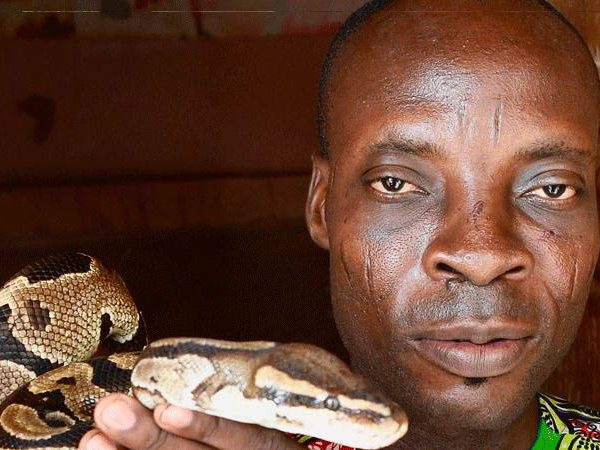
Gold and Magic
- Prices from£9,299EXPLOREMorocco & Western Sahara, Guinea-Bissau, Mauritania, SenegalMarrakech to Bissau
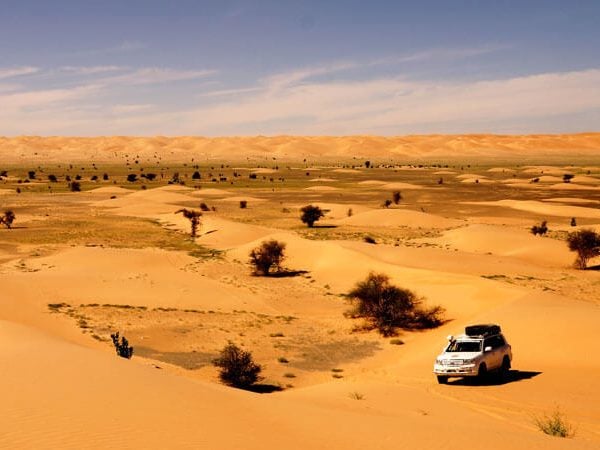
Marrakech to Bissau
- Prices from£9,099EXPLOREGuinea-Bissau, Guinea, Sierra Leone, Liberia, Ivory Coast, Ghana, Togo, BeninBissau to Cotonou – Heart of West Africa
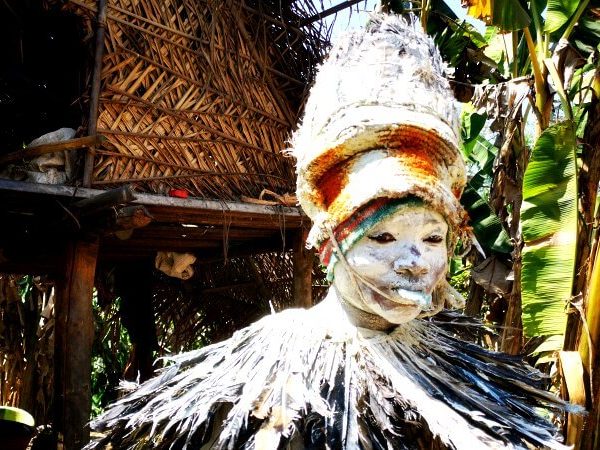
Bissau to Cotonou – Heart of West Africa

